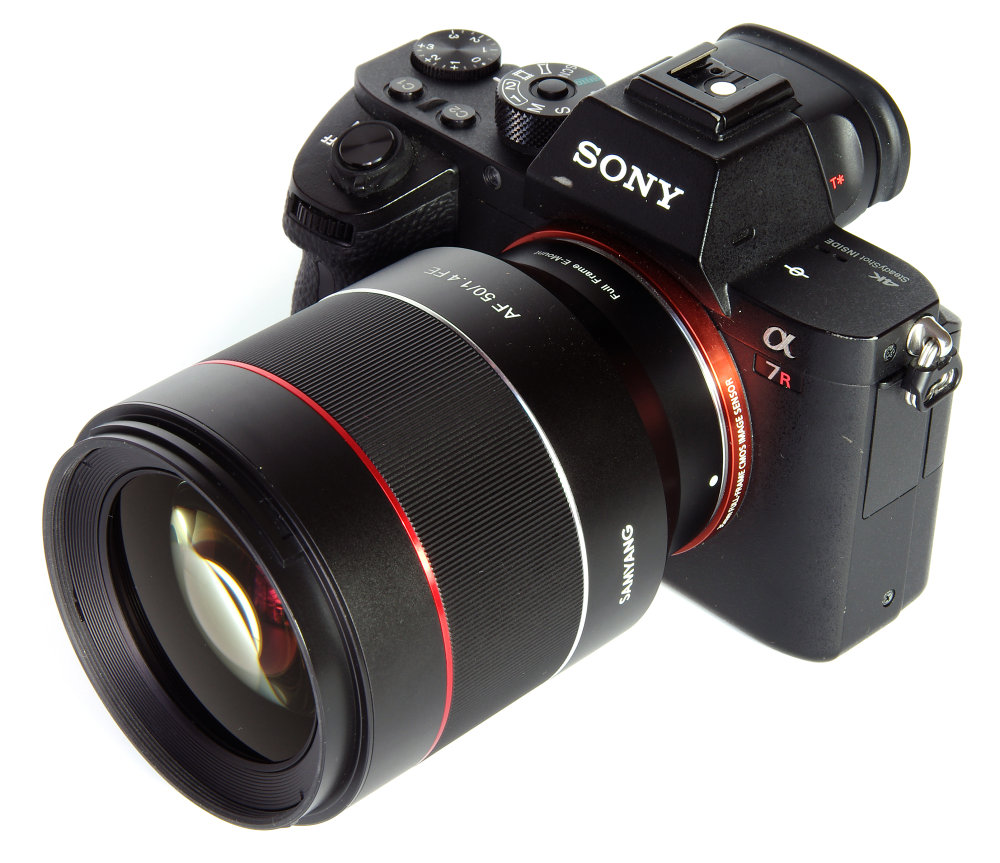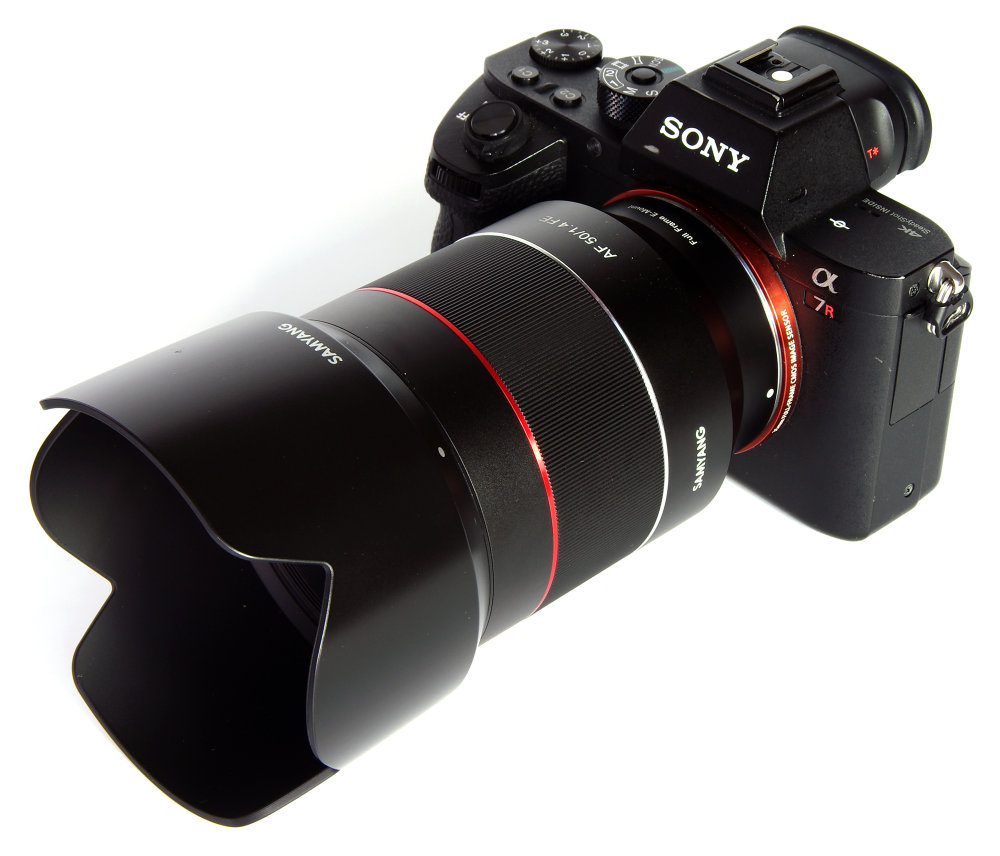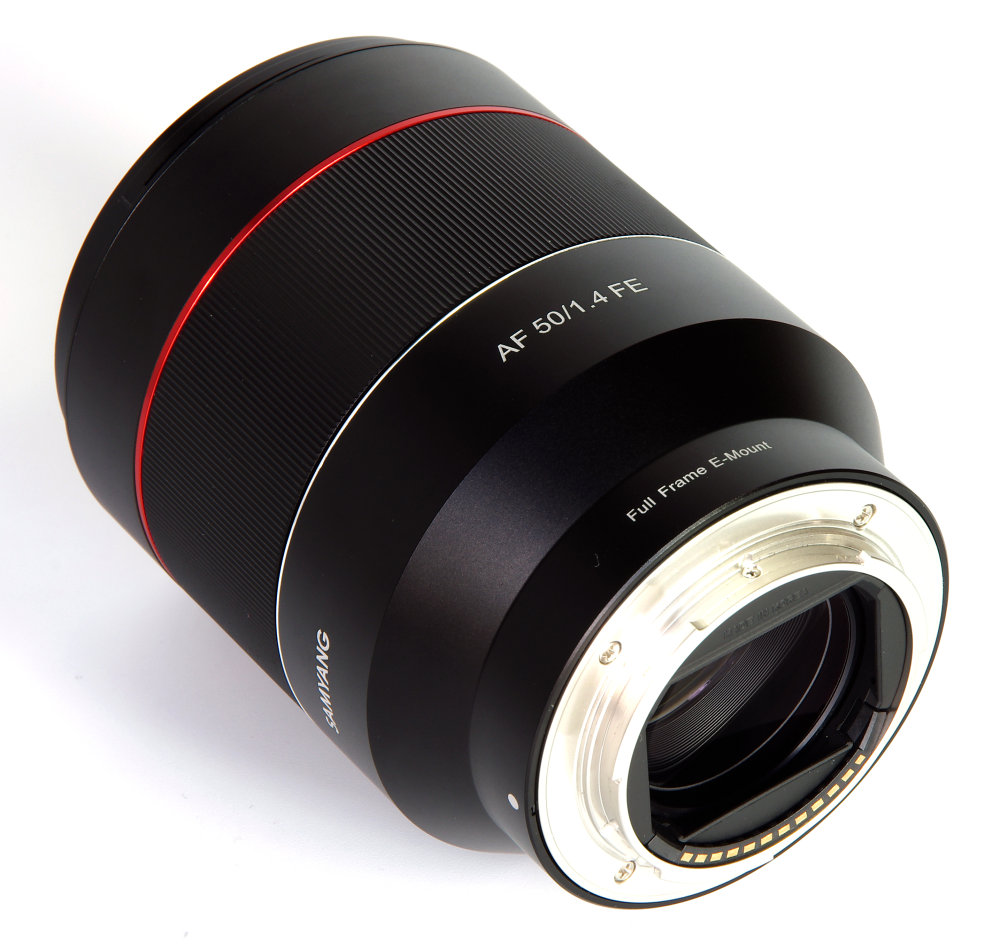Samyang AF 50mm f/1.4 FE Review
Samyang AF 50mm f/1.4 FE Handling and Features
The lens has been specially designed for mirrorless cameras. The back focus distance is reduced to take into account the requirements of the mirrorless camera. Thus, the lens can have its rear element very close to the sensor, without having to resort to a retrofocus design to make room for the mirror box assembly on a DSLR. However, as Leica has already found, this is not quite the same advantage as a rangefinder camera with film. Especially with wider angle lenses, their rear element naturally lies very close to the sensor plane, resulting in oblique light rays from the edges. Digital sensors like telecentric designs, with light rays exiting the lens as parallel as possible, and this is not always so easy.
This all results in a relatively large lens for its specification, weighing a formidable 585g compared to a conventional DSLR 50mm f/1.4 lens that might weigh as little as 220g. Having said that, it is manufactured substantially using metal and looks very good mounted on the Sony Alpha A7R II. It mounts solidly, with no play whatsoever in the mount / lens interface.
As we take a tour of the lens, there is very little on the outside to see. The 67mm filter thread is surrounded by a well machined bayonet for the slick and generously sized bayonet lens hood. The nine-bladed diaphragm can be clearly seen, forming a reasonably circular stop. The only other feature is the finely ribbed manual focusing ring. It is fairly wide and placed exactly where we might want to hold the lens in use. This is very convenient, but accidental shifting of the focus point should be watched for. The feel of the ring is light but not excessively so.
The one major omission is weather resistance. This is something that is becoming increasingly standard and, whereas it would not have raised a mention at one time, things have moved on.
On the inside, we have 9 elements in 8 groups, three of which are aspherical. The lens is internal focusing, so it does not rotate or extend in use. This is helpful when using polarisers and graduated filters. Minimum focusing distance is 0.45m (1.47 feet), a maximum magnification of 0.15x. This is fairly typical of any traditional 50mm lens.
Of course, the addition of AF for the first time is of especial interest. It is quiet in operation and locks on swiftly and reliably. Some DSLRs are faster, but this is a property of the camera as well as the lens. For the sort of subjects a 50mm lens is expected to handle, it is more than satisfactory and were it not a new feature for Samyang it would probably pass without note. A successful introduction.
Add your message
Please login here or if you've not registered, you can register here. Registering is safe, quick and free.
photodo Stats
428 MTF tests
74 in-depth photodo reviews
100+ users join each day
Help the lens community by reviewing or rating a lens today via our lens search
Latest Lens Reviews
- Chinon 28mm f/2.8 Vintage Lens Review
- Canon EF 70-200mm f/4L IS II USM Lens Review
- Samyang AF 85mm f/1.4 EF Review
- Sigma 70mm f/2.8 DG Macro Art Review
- Samyang AF 24mm f/2.8 FE Review
- Meike 50mm f/1.7 Review
- Tamron 70-210mm f/4 Di VC USD Review
- Lensbaby Burnside 35mm f/2.8 Review
- Asahi Super Takumar 50mm f/1.4 Review
- Asahi Super-Multi-Coated Takumar 135mm f/3.5 Review



